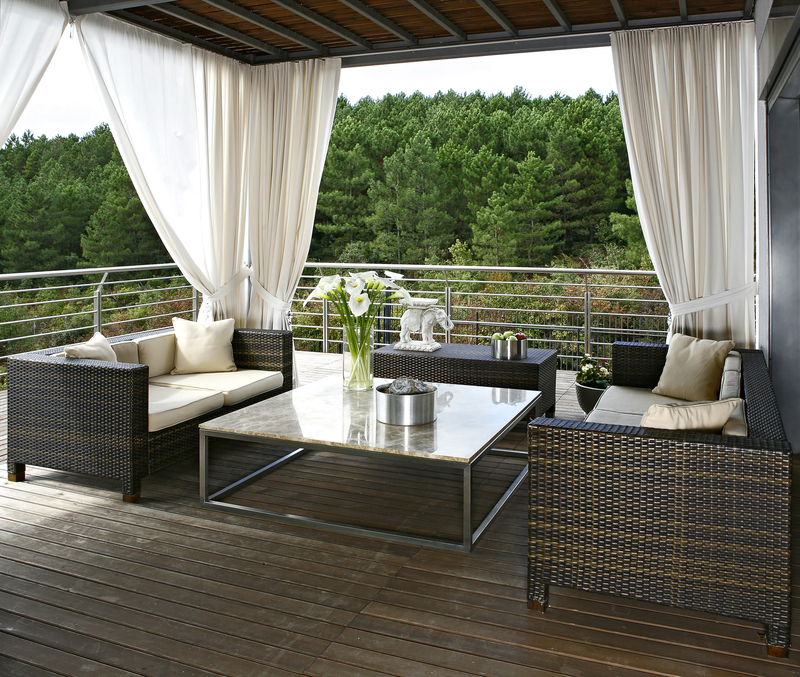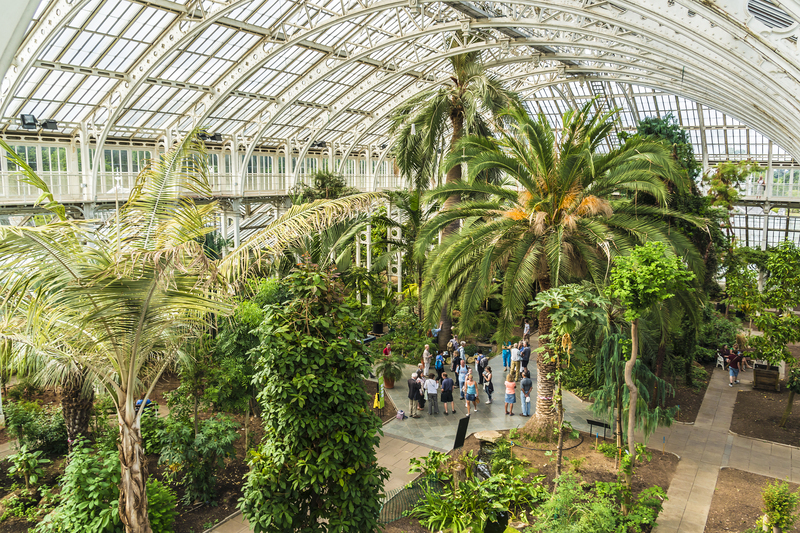Nurturing Nature: Crafting a Herb Garden Oasis
Posted on 17/06/2025
Nurturing Nature: Crafting a Herb Garden Oasis
Imagine a space where lush greenery, invigorating aromas, and culinary inspiration come together--a personal herb garden oasis. Harnessing the power of nature right at home, a well-planned herb garden can uplift your senses, enhance your meals, and elevate your wellbeing. Whether you're a seasoned horticulturist or a budding gardener, creating a herb garden sanctuary provides long-lasting rewards for you and the environment.
Why Choose a Herb Garden Oasis?
- Convenience: Fresh herbs just steps away from your kitchen.
- Health Benefits: Access to organic ingredients, rich in vitamins and minerals.
- Biodiversity: Encourage pollinators and boost local eco-systems.
- Aesthetic Appeal: Transform plain landscapes into lush, aromatic escapes.
Beyond culinary delights, nurturing a herbal retreat at home supports sustainability and mindful living. Let's explore how to create your own thriving herb garden paradise.

Planning Your Herb Garden Sanctuary
1. Assess Your Space and Conditions
First, decide where your herb haven will bloom. Most herb garden oases thrive in sunny locations receiving at least six hours of sunlight each day. Select a spot that is:
- Close to the kitchen for easy access.
- Well-draining to prevent root rot.
- Protected from strong winds and pets.
Don't worry if you have limited outdoor space--balconies, patios, and windowsills all make excellent spots for pots and vertical gardens.
2. Choosing Your Herbs: Aromatic Essentials
With a plethora of herbs to choose from, think about your culinary habits and preferences. Here are popular choices for any herbal sanctuary:
- Basil - Perfect for Italian dishes and pestos.
- Rosemary - Adds aromatic depth to meats and potatoes.
- Thyme - Enhances sauces, soups, and breads.
- Mint - Refreshing in teas, salads, and desserts.
- Chives - Delicate onion flavor, great for garnishing.
- Parsley - Universal garnish and flavor enhancer.
- Cilantro - Vital for salsas and international cuisine.
- Sage - Earthy, perfect for roasts and autumn dishes.
Mix perennial and annual herbs to ensure year-round harvests and visual diversity.
Design Principles for a Herb Garden Paradise
Thoughtful design transforms your space into a true rejuvenating escape.
3. Garden Layout Ideas
- Traditional Rows: Organized, easy to maintain, and perfect for beginners.
- Raised Beds: Improved drainage, soil control, and accessibility.
- Container Gardens: Movable, compact, and ideal for small spaces.
- Spiral Herb Gardens: Maximizes space vertically and adds visual intrigue.
- Vertical Walls: Use wall-mounted planters or hanging baskets for tight spots.
Consider incorporating paths, decorative stones, or garden sculptures to personalize your herbal oasis.
4. Soil and Fertilization Needs
Herbs flourish in rich, well-drained soil. Enhance your garden by blending organic compost and coarse sand for the perfect texture. Regular feeding with gentle, organic fertilizers or compost tea supports robust growth without chemical build-up.
Planting & Caring for Your Herb Garden oasis
5. Sowing and Planting Techniques
- Direct Sowing: Plant seeds directly into garden beds after the last frost.
- Transplanting: Start seeds indoors 4-6 weeks early, then move seedlings outside.
- Dividing: Perennials like mint and chives multiply through division of mature clumps.
- Cuttings: Propagate rosemary and oregano from stem cuttings for cost-effective expansion.
Space herbs with proper airflow in mind, and cluster those with similar water and sun requirements together for easier maintenance.
6. Watering Wisely
Overwatering is a common pitfall. Most herbs prefer their soil to be slightly moist, not soggy. Here are some key watering tips:
- Water in the morning to discourage fungal diseases.
- Let the top inch of soil dry out between waterings.
- Mulch to retain soil moisture and moderate temperature.
7. Pruning and Harvesting for Abundance
Regular pruning not only keeps herbs bushy and healthy but also extends their productivity. Snip shoots above leaf nodes with sharp scissors--avoid cutting more than one-third of the plant at a time. Use fresh clippings in your meals or dry them for use throughout the year.
Pest and Disease Management in Your Herbal Refuge
8. Encouraging Natural Predators
Ladybugs, lacewings, and predatory wasps are your allies. Cultivate pollinator-friendly flowers nearby and avoid broad-spectrum pesticides to maintain a healthy, organic herb garden.
9. Organic Solutions to Common Problems
- Neem oil: Effective against aphids and mites.
- Soap sprays: Mild defense for soft-bodied insects.
- Companion Planting: Pair basil with tomatoes, or chives with carrots to deter unwanted pests.
- Hand-Picking: Remove caterpillars and slugs manually in the early morning or evening.
Herb Garden Oasis Ideas for Every Home
Indoor Herb Gardens
Small spaces reap big rewards! Use sunny windowsills, hydroponic kits, or countertop planters for a thriving indoor herbal retreat. LED grow lights supplement dim areas, ensuring healthy growth year-round.
Outdoor Mediterranean-Style Herb Gardens
Embrace drought-loving herbs like rosemary, thyme, and lavender. Arrange stones and gravel for a sunny, low-maintenance herbal haven reminiscent of Mediterranean coastal landscapes.
Vertical and Hanging Solutions
Maximize every inch by installing herb pockets on fences, wall trellises, or hanging baskets. Vertical gardens create lush, aromatic green walls--functional art for your home.
Seasonal Care for Your Herb Garden Sanctuary
Spring and Summer
- Prune winter-damaged growth.
- Feed with slow-release, organic fertilizers.
- Regularly water and harvest to encourage more growth.
Autumn Preparation
- Collect and dry surplus leaves for winter use.
- Divide perennial herbs and replant.
- Protect tender species with mulch or by bringing them indoors.
Winter Tips
- Move potted herbs to shelter or sunny indoor locations.
- Reduce watering.
- Start planning for next season's additions!
Eco-Friendly Tips for a Sustainable Herb Garden Oasis
- Compost kitchen scraps: Enrich soil naturally.
- Use rainwater: Fit a barrel to your downspout.
- Choose local and heirloom herb varieties: They're best adapted to your climate.
- Encourage beneficial insects: Plant native flowers and avoid chemical pesticides.
Companion Planting for a Thriving Herb Garden Sanctuary
Companion planting involves situating herbs where they benefit each other and surrounding plants. Example pairings:
- Tomatoes and basil: Basil enhances tomato growth and repels insects.
- Rosemary and sage: Both deter cabbage moths and thrive in similar conditions.
- Cilantro and dill: Attract beneficial predatory insects to the area.
Harvesting and Storing Your Herbal Bounty
Best Times to Harvest
Pick herbs early in the morning, once dew has lifted, for maximum flavor and oil content. Frequent harvesting encourages leafy regrowth and a continuous bounty.
Drying, Freezing, and Preserving Techniques
- Hang bundles: Upside down in a dark, dry, and well-ventilated area.
- Use a dehydrator: For quick, efficient drying.
- Freeze in oil: Chop herbs and freeze in ice cube trays covered with olive oil for instant flavor boosters.
- Make herbal infusions: Store fresh flavors in vinegars, oils, or butter.
Creative Uses for Your Herb Harvest
- Homemade teas: Mint, chamomile, and lemon balm are relaxing and refreshing.
- Infused waters and cocktails: Basil, rosemary, and thyme make unique beverage garnishes.
- Beauty and wellness: Use lavender and calendula in homemade skincare.
- Aromatherapy: Dried herbal sachets for drawers and closets.

Herb Garden Oasis: Enhancing Mindfulness and Wellbeing
Nurturing a herb garden paradise is not just about aesthetics and flavor; it's a journey towards peace and wellness. Studies have shown that gardening can:
- Reduce stress and improve mental health.
- Boost mood and creativity.
- Provide gentle, rewarding exercise.
Walking through your lush herb garden and inhaling its fresh aromas can be a daily mindfulness ritual, grounding you in the present moment and connecting you to the rhythms of nature.
Conclusion: Your Herbal Sanctuary Awaits
Whether you're growing basil by the window or tending a vast Mediterranean-inspired herbal landscape, crafting your own herb garden oasis is an accessible, gratifying endeavor. Your efforts will be rewarded with abundant harvests, vibrant landscapes, and a harmonious retreat that nurtures nature and your spirit.
Begin your journey today: With a little planning and care, your dream herb garden sanctuary is closer than you think. Each seed planted is a step toward sustainable living and joyful connection with nature--right outside your door.
Let your herb garden oasis flourish, and let the healing power of plants enrich every corner of your home and life.

